Drummer Automaton #mechanical #fabrication #analog #itp #fabricating-mechanical-automatons #featured
Yaogu, also known as the Waist Drum dance, is a traditional folk dance popular in my hometown region of Northern Shaanxi, China. Having lived away from my hometown for over a decade, I wanted to create something that would remind me of my fonding memories there.
While my ultimate goal was to create a dancing figure, I thought it would make sense to start with a simpler figure—the drummer. Yaogu is usally performed by a large group of performers.`The drummers (distinct from dancers with waist drumers) play a key role in the performance, as their drum strokes create the overall rhythm for the dance.
A drummer’s motion can be simplified as two arms alternating to move up and down. To create a cardboard prototype, I used a relatively simple mechanism: a cam. The cam is eccentric, so as it rotates, it pushes the follower up and down. With two identical cams, they can be positioned so that when one cam pushes the follower up, the other cam does not.
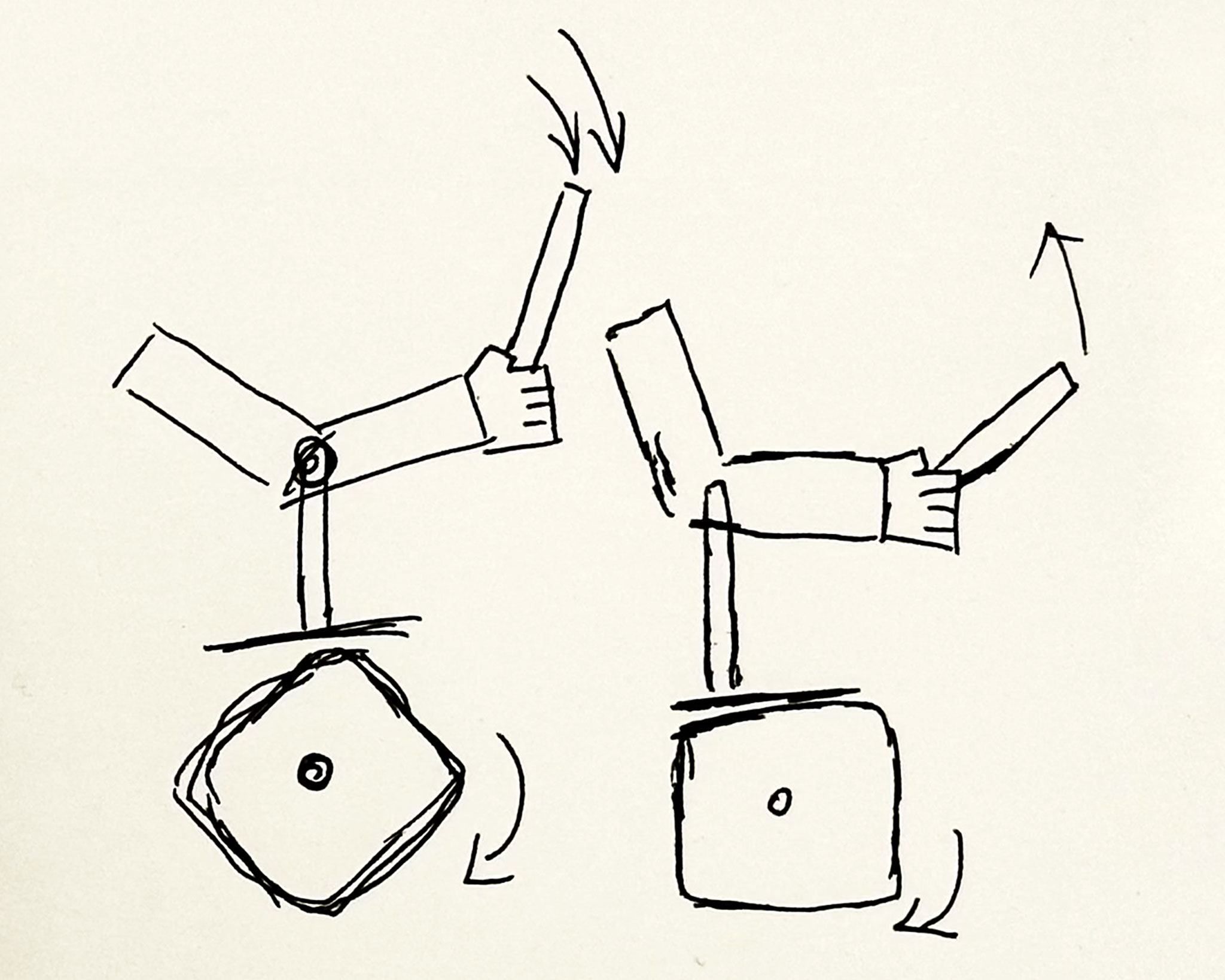
After some tests, I found squares to be a good shape to use as cams in this scenario. With one full revolution, the cam pushes the follower very quickly four times.
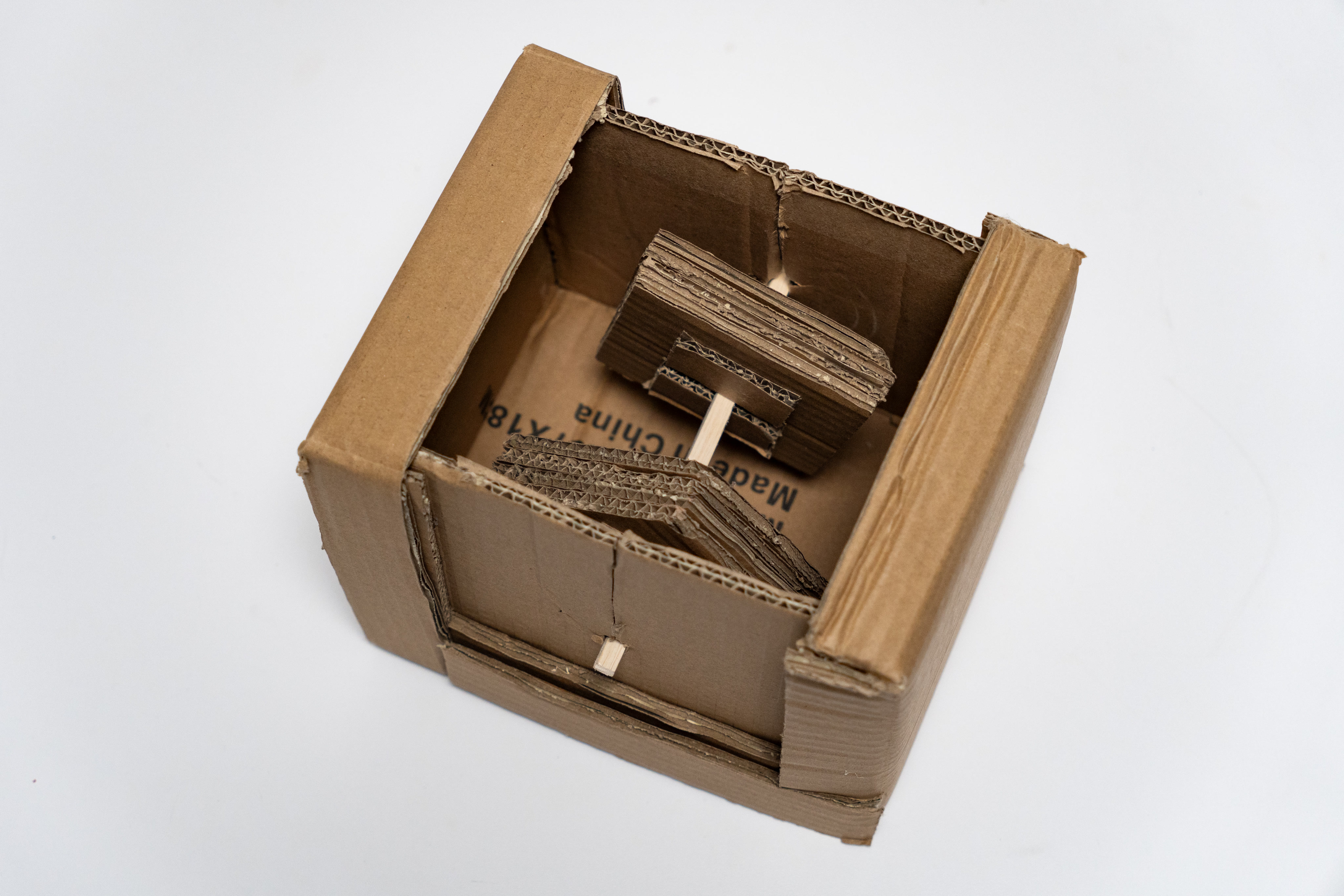
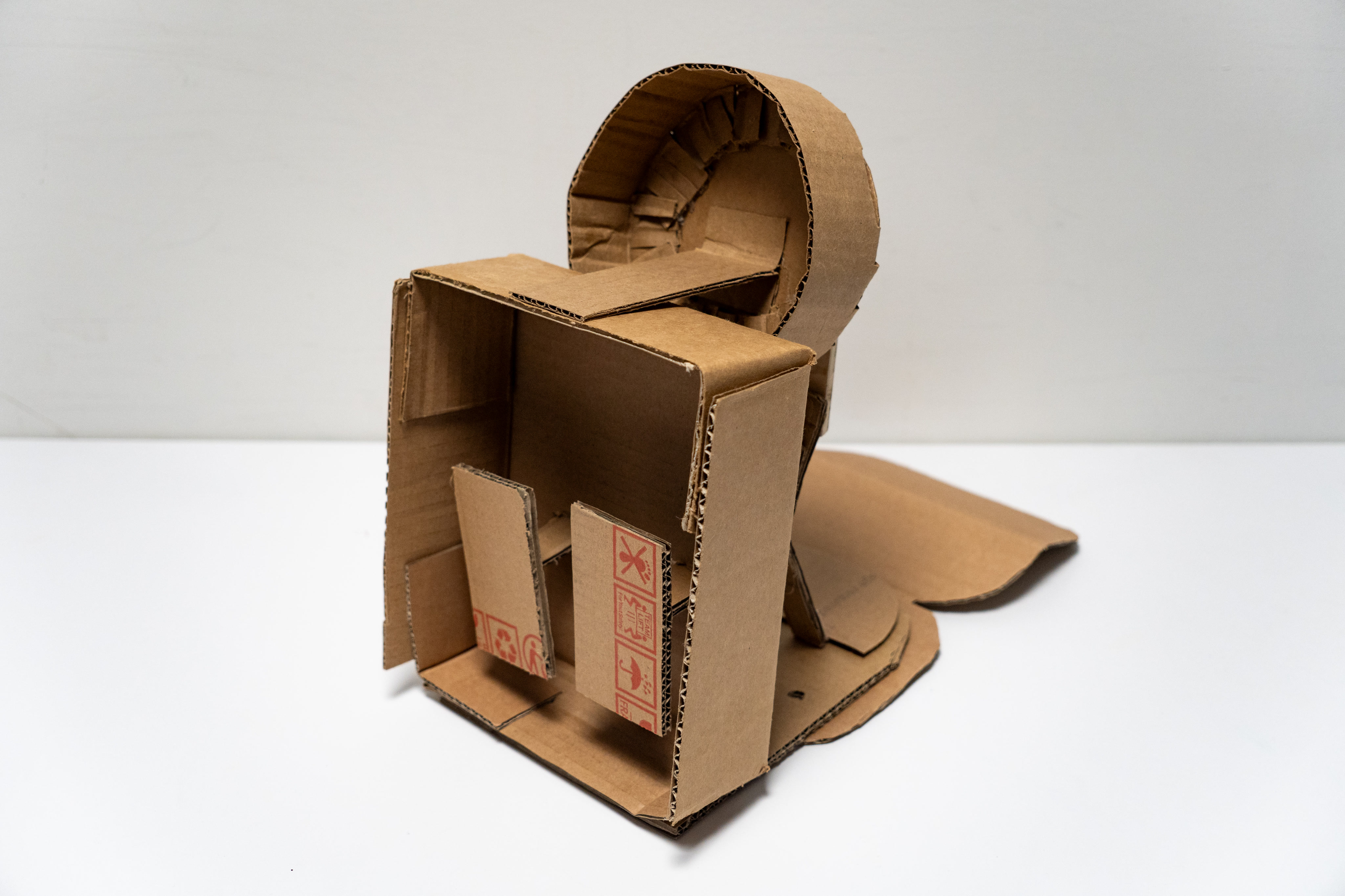
This results in a rapid drumming motion. I was pleasantly surprised that the cardboard prototype even made a drumming sound after I added a cardboard drum.
Before replicating the design for a wooden automaton, I watched additional videos of Yaogu performances. I noticed that the drummers lift their arms very high, in contrast to the limited movement my cardboard prototype produced. I wanted to create a more accurate depiction of the drumming, so I began considering other mechanisms.
After doing further research and watching many more automaton videos, I came across someone who had created a drummer automaton using a thread to pull the arms. I believed this approach would allow the arms lift much higher, so I decided to go with this mechanism instead. Under the hood, it still uses the same cam mechanism, but this time, the cam pushes a thread instead of a stick.
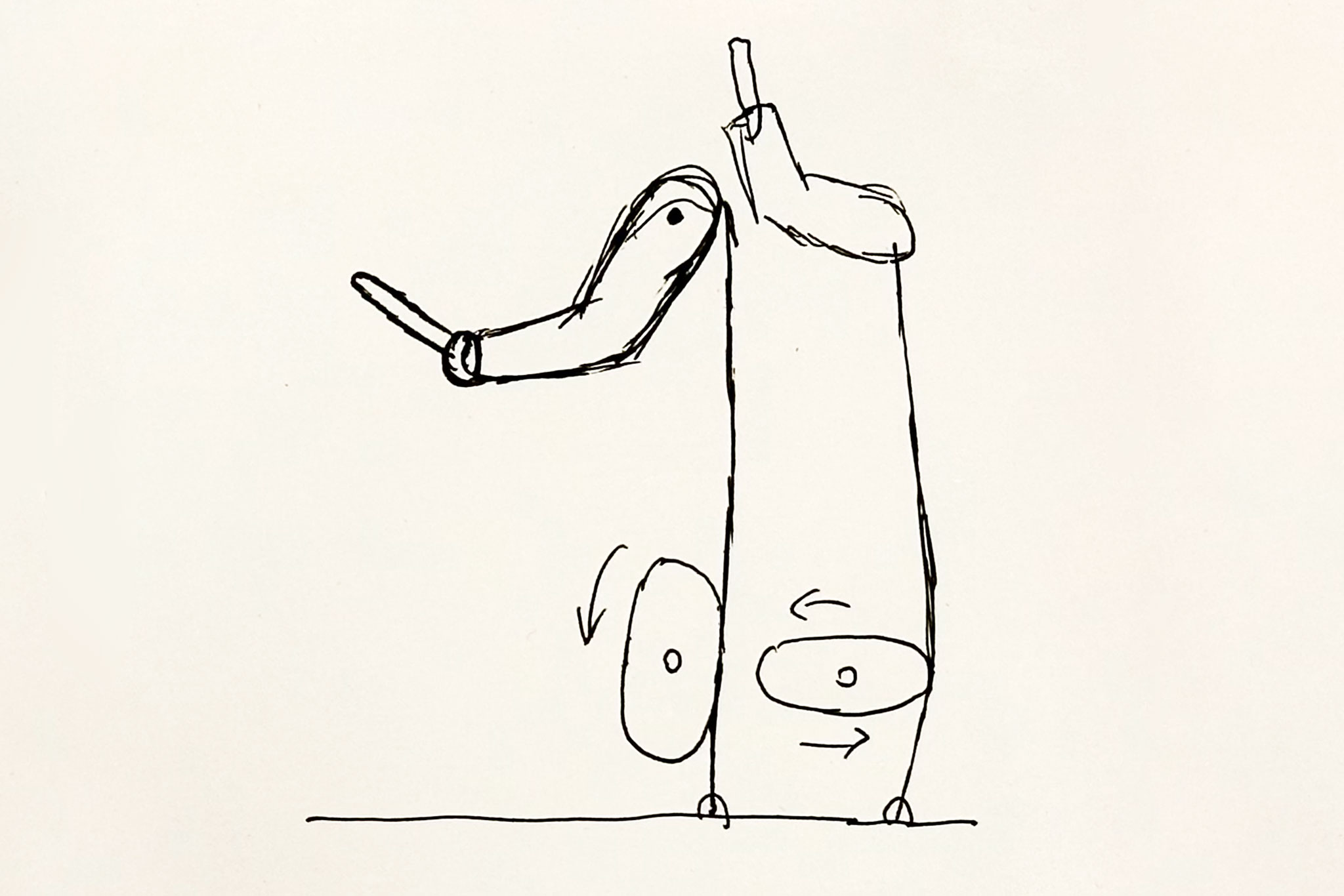
With this in mind, I carved a pair of wooden arms with drumsticks attached, along with a simple torso, and started experimenting. It was tricky to identify the best position for the axle and the thread. I also wasn’t sure what type of thread would work best. After lots of trialsand error, I settled on a thin fishing line. Truly, I couldn’t determine the optimal positions without testing it out.
I had to assemble the entire piece, including the base that houses the cam mechanism, before knowing if it would work. Fortunately, I designed everything to be modular and reusable so that components could be swapped out fairly easily.
The first version didn’t work as well as I’d hoped, so I tried different cams and experimented with ways to secure the fishing line. I even had to drill a second pair of holes on the arms.
This final version worked pretty well, though it wasn’t without challenges.
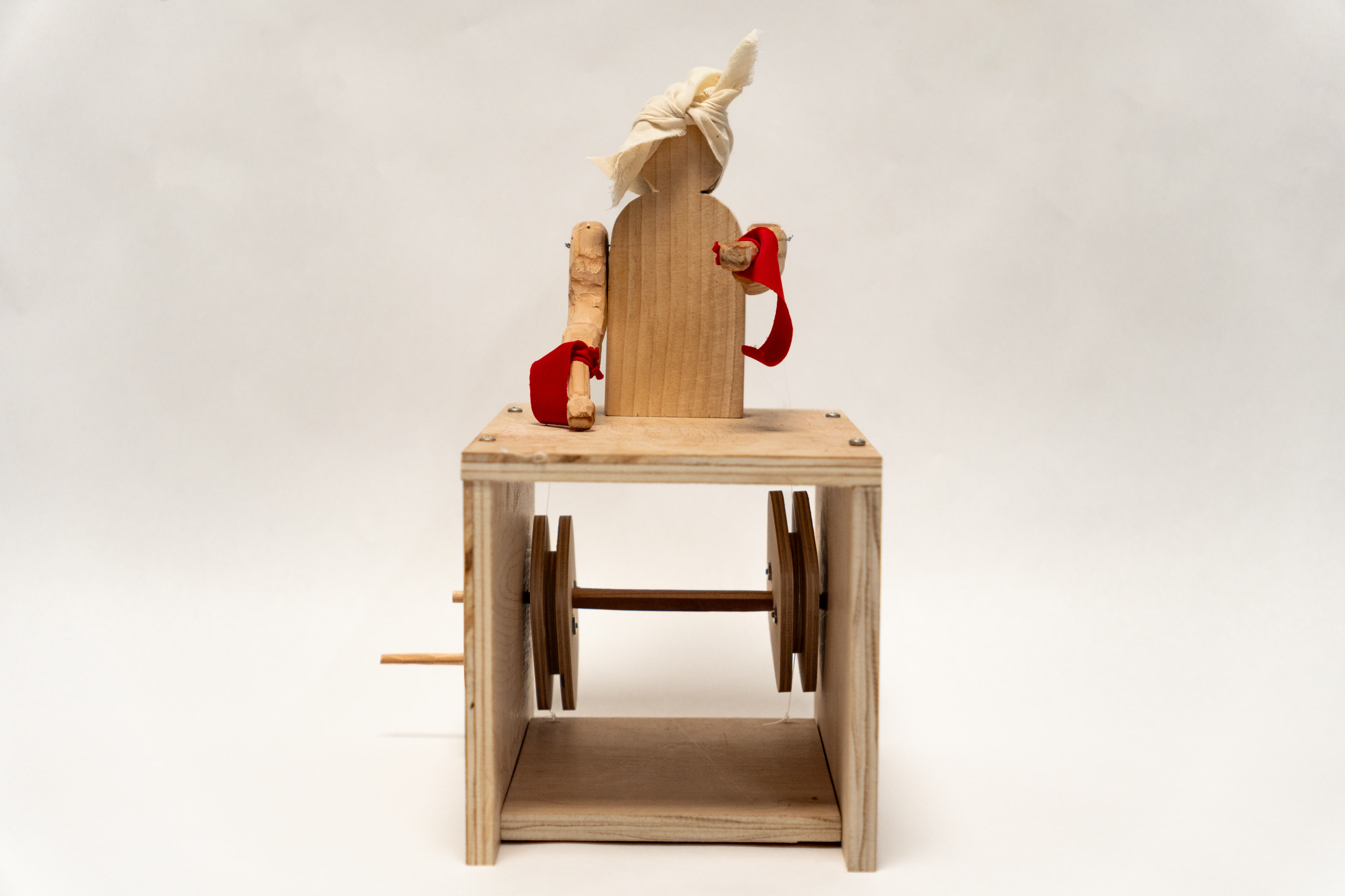
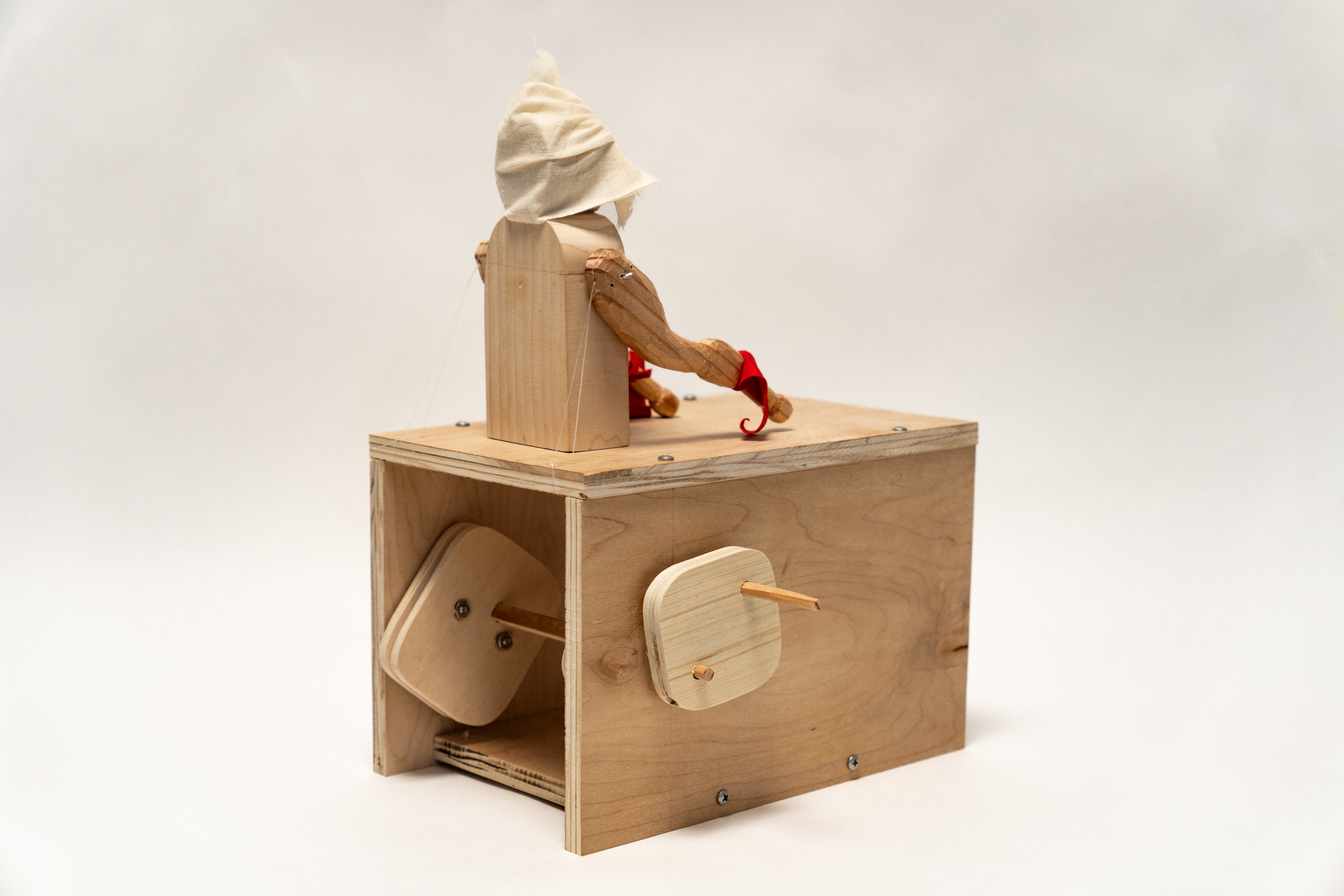 |
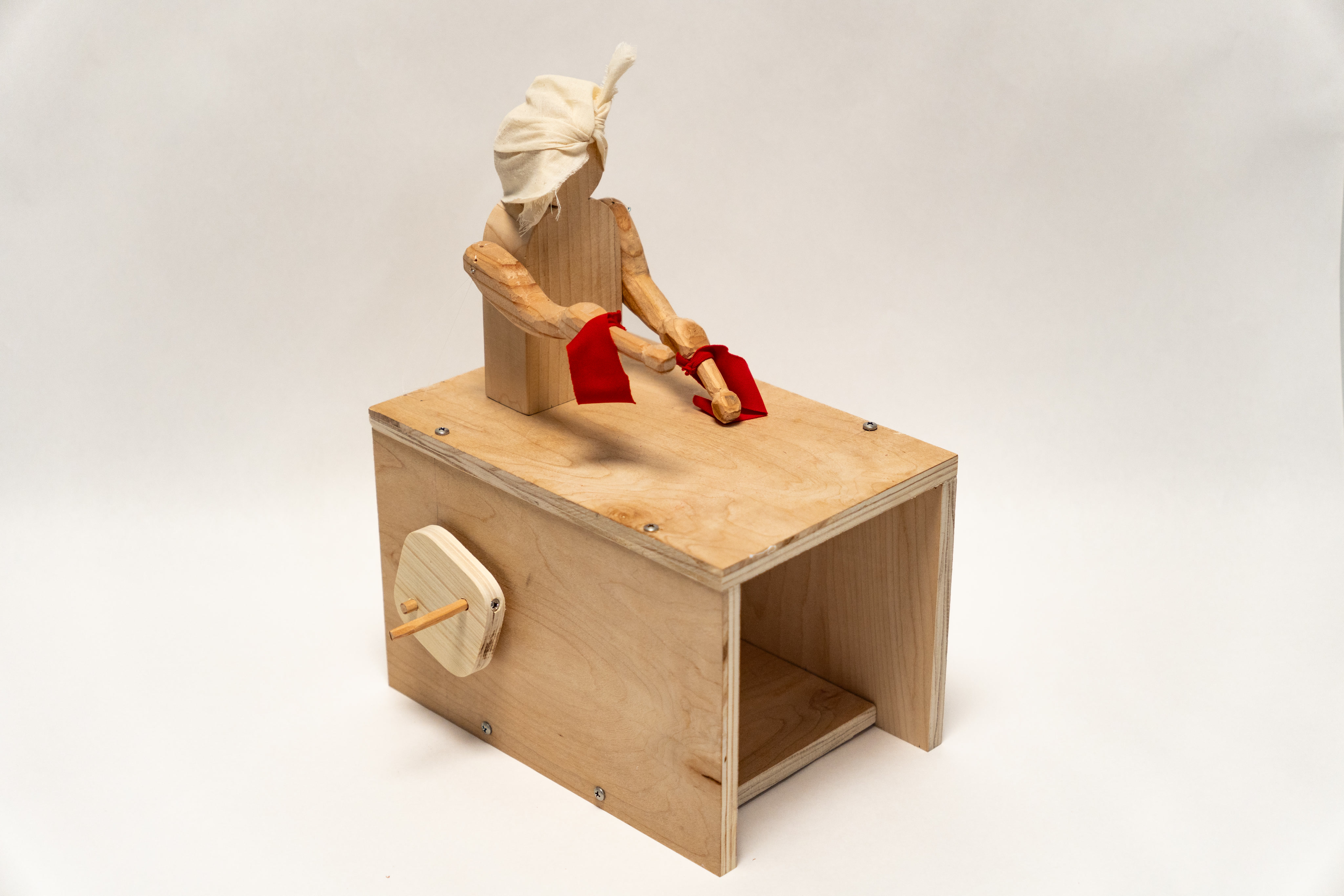 |
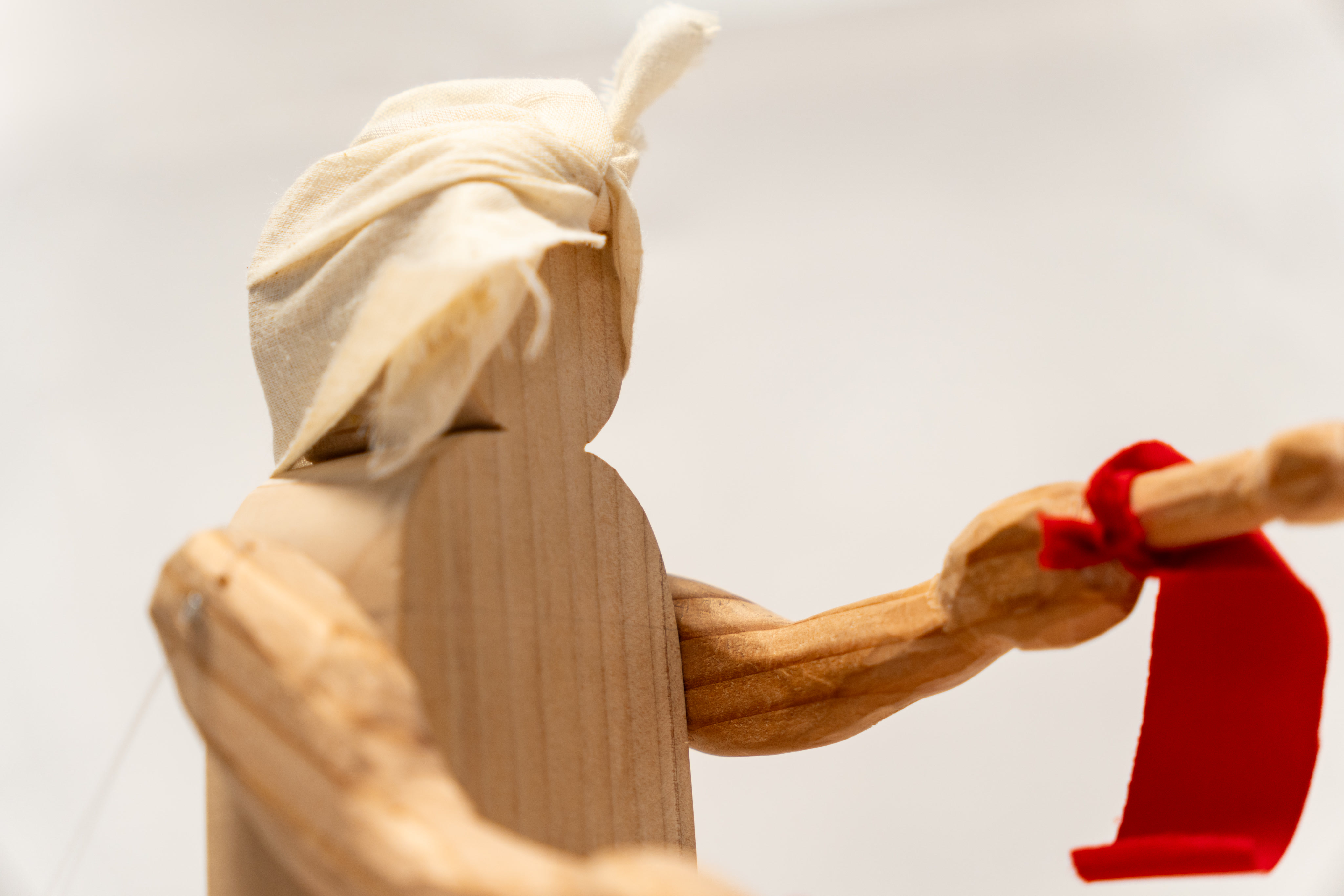
For a future version, I would likely choose a more consistent visual style—either using simple geometric shapes throughout the automaton or carving more detailed features for the entire character. I also intended to build a miniature drum, but I found that the way the drummer currently hits the base produces a rather satisifying sound.